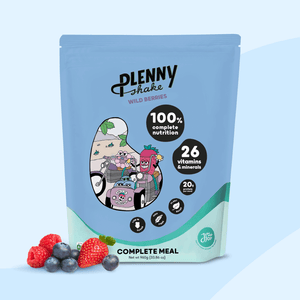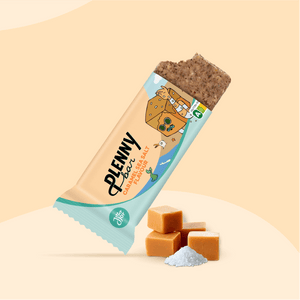What Is Diabetes?
Diabetes mellitus is a group of metabolic diseases characterized by a high blood sugar level over a prolonged period of time [1].
It’s a disease that prevents your body from properly using the energy from the food you eat. Your body is made up of trillions of cells. To produce energy, the cells need food in a very simple form.

For example, when you eat or drink, much of your food is broken down into a simple sugar called glucose. Glucose provides the energy your body needs for daily activities. The blood vessels and blood are the sort of highways that transport sugar. Sugar cannot go into the cells by itself.
Why not?
The pancreas naturally produces insulin once it senses that you are eating. Insulin is immediately released into the blood, where it acts as the "key" that opens the door for sugar to enter into the cells, where it would be used for energy. When sugar leaves the bloodstream and enters the cells, the blood sugar level is lowered.

Without insulin (this precious “key"), sugar cannot get into the body's cells for use as energy. Which causes blood sugar levels to rise.
So, simply said, diabetes Mellitus is a disease that occurs when your blood sugar is too high due to problems with the hormone ‘insulin’ [2].
What's the Difference Between Type 1 and Type 2 Diabetes?
The American Diabetes Association (ADA) classified diabetes into two broad categories, namely; type 1, type 2 and other types [1].

Type 1 Diabetes
In type 1 diabetes, the pancreas makes little or no insulin, so sugar cannot get into the body's cells for use as energy. People with type 1 diabetes must use insulin injections to control their blood glucose. Approximately 5-10% of people with diabetes are diagnosed with type 1.
Type 2 Diabetes
In type 2 diabetes, the pancreas makes insulin, but it either doesn't produce enough, or the body becomes insulin resistant, meaning that tissues such as the muscle and liver don’t respond well to insulin and therefore can’t use glucose from your blood as energy. Nine out of 10 people with diabetes have type 2, and it is often accompanied by other conditions such as hypertension. Type 2 diabetes may sometimes be controlled with a combination of diet, weight management and exercise. However, treatment may also include glucose-lowering medications or insulin injections [2].
Prediabetes
Prediabetes means you have a higher than normal blood sugar level. It's not high enough to be considered type 2 diabetes yet, but without lifestyle changes, pre diabetics are more likely to develop type 2 diabetes. Eating healthy foods, making physical activity as part of your daily routine and maintaining a healthy weight can help bring one’s blood sugar levels back to normal [3] [4].
What Is a Diabetes Diet?
If you have diabetes or prediabetes, your doctor will likely recommend that you see a dietitian to help you develop or maintain a healthy eating plan. This will help you control your blood sugar (glucose).
Usually, a diabetes diet is a meal plan that's naturally rich in nutrients and fiber, low in fat and calories. Actually, a diabetes diet is a great eating plan for almost everyone, since key elements are fruits, vegetables and whole grains. The diet is based on eating three meals a day at regular times. This helps to better use the insulin that your body produces or gets through medication.
There are different approaches on creating a diabetes meal plan. The ADA recommends an individualized nutritional approach which promotes nutrient-dense foods through controlled portion sizes. For this, the ADA came up with the 'plate method’ which is a simple method of meal planning. In essence, it focuses on eating more vegetables. According to the ADA you can follow these steps when preparing your plate:
- “Fill half of your plate with non starchy vegetables, such as spinach, carrots and tomatoes.
- Fill a quarter of your plate with a protein, such as tuna, lean pork or chicken.
- Fill the last quarter with a whole-grain item, such as brown rice, or a starchy vegetable, such as green peas.
- Include "good" fats such as nuts or avocados in small amounts.
- Add a serving of fruit or dairy and a drink of water or unsweetened tea or coffee.”

Other ways to help you keep your blood glucose level within a normal range are to count carbohydrates, or to rank carbohydrate-containing foods based on their effect on blood glucose levels (aka the glycemic index). The lower the glycemic index of foods, the lower their impact on blood glucose and tendency to cause insulin spikes. There’s also a possibility that a dietitian recommends you to choose specific foods to help you plan your meals and snacks. In this case, you can choose foods from a list including categories such as carbohydrates, proteins and fats. The ADA also recommends a moderation or suppression in alcohol consumption, and limiting salt consumption to < 5.75 g/day [6].
Carbohydrates
The diet always includes fiber-rich complex carbohydrates which can be found in whole wheat, oatmeal and beans. Complex carbohydrates take longer to digest and are a more stable source of energy than simple carbohydrates. Because carbohydrates break down into glucose, they have the greatest impact on blood glucose levels. To help control the blood sugar, it is being advised to calculate the amount of carbohydrates you are eating so that you can adjust the dose of insulin accordingly. Fiber (a carbohydrate) plays an important role in controlling blood sugar levels. Foods rich in fiber include vegetables, fruits, nuts, legumes and whole grains [5] [7].
Fatty Acids
Foods containing monounsaturated and polyunsaturated fats, like Omega-3 fatty acids, can help lower cholesterol levels. Avocados, nuts and olive oil are good sources of these fatty acids [6] [7]. For further information around mono and polyunsaturated fats check out our blog: https://us.jimmyjoy.com/blogs/jimmy-joy/introduction-to-macronutrients
Protein
Some research has found successful management of type 2 diabetes with meal plans including slightly higher levels of protein (20–30%), which may contribute to increased satiety. However different studies suggest that protein should be a supplement to vegetables, fruits and whole grains in a meal, not the entire meal. Multiple studies have found that a plant-based diet can control blood sugar levels to a greater extent than a traditional diabetes diet which limited calories and carbohydrates.Plant based protein can be found in soy, brown rice, quinoa, pea, buckwheat, bulgur, nuts, legumes and seeds [7] [9] [10].
Diabetes and Weight Loss
Research has shown that weight loss is the primary medical aim for diabetic patients with the type 2 form of diabetes.
By reducing weight, especially from the abdominal area, insulin sensitivity will improve along with blood glucose control, and thus reduce the risk of complications.

Meal replacements like the Jimmy Joy Plenny Shake can involve replacing one or two meals a day with a meal replacement beverage. These meal replacers have been shown to lead to greater weight loss compared with a reduced calorie diet, according to Dr. Steven B. Heymsfield [8].
Read more practical tips in our Complete Guide to Fat Loss.
What Is the Best Meal Replacement Shake for Diabetics?
The combination of complex carbohydrates like the dietary fiber inulin, protein and fatty acids create an optimal balanced meal replacement. This can be easily incorporated in a healthy and varied diet, rich in unprocessed products.
Hooray! All Jimmy Joy products include slow-releasing (complex) carbohydrates that include starches and fibers which can be found in ingredients like oatmeal, flaxseeds, inulin and soy. These complex carbs help to control blood sugar levels thanks to their fiber content.
Moreover, the Plenny Shakes, Plenny Drink, Plenny Bar, and Plenny Pot are a rich source of omega 3 fatty acids that help in lowering cholesterol levels.
Pro tip: if you are looking for a product 100% free from sugar, Plenny Shake Active Neutral is our unflavored and unsweetened option.

Jimmy Joy comes in handy for diabetes since one bar, a shake or drink is equal to one optimal formulated nutritious meal. This means you don’t have to think about what food you need to eat during the day.
Here is some nutrition information of one Plenny Shake Active meal (100g) that will keep you full for hours:
- 424 calories (remember, it’s a meal shake)
- 29g protein
- 37g total carbs, of which 4,0g sugar
- 16g fat, of which 2,4g saturated fat
- 8,3g fiber
Note: See your doctor if you're concerned about diabetes or if you notice any type 1 or 2 diabetes signs or symptoms. Ask your doctor about blood sugar screening if you have any risk factors for diabetes.
Reviews Jimmy Joy and Diabetes

Sources
[1] A.T. Kharroubi, H.M Darwish. Diabetes mellitus: The epidemic of the century. Available from:
https://www.ncbi.nlm.nih.gov/pmc/articles/PMC4478580/ .
[2] Cleveland Clinic. Diabetes Mellitus: An Overview. Available from: https://my.clevelandclinic.org/health/diseases/7104-diabetes-mellitus-an-overview
[3] Edwards CM, et al. Prediabetes A worldwide epidemic. Endocrinology and Metabolism Clinics of North America. Available from: https://www.mayoclinic.org/diseases-conditions/prediabetes/symptoms-causes/syc-20355278
[4] Insulin resistance and prediabetes. National Institute of Diabetes and Digestive and Kidney Diseases. Available from: https://www.niddk.nih.gov/health-information/diabetes/overview/what-is-diabetes/prediabetes-insulin-resistance
[5] Dr. E. Zacharias. Complex Carbohydrates and Dietary Fiber. Available from: https://www.bouldermedicalcenter.com/complex-carbohydrates-and-dietary-fiber/
[6] M. Regina Castro, M.D. Diabetes diet: Create your healthy-eating plan. Available from: https://www.mayoclinic.org/diseases-conditions/diabetes/in-depth/diabetes-diet/art-20044295
[7] A. Gray, et al. Nutritional Recommendations for Individuals with Diabetes. Available from: https://www.ncbi.nlm.nih.gov/books/NBK279012/
[8] S.B. Heymsfield. Meal replacements and energy balance. Available from: https://www.academia.edu/12066521/Meal_replacements_and_energy_balance
[9] Yokoyama, Y., Barnard, N. D., Levin, S. M., & Watanabe, M. (2014). Vegetarian diets and glycemic control in diabetes: a systematic review and meta-analysis. Cardiovascular diagnosis and therapy, 4(5), 373–382. https://doi.org/10.3978/j.issn.2223-3652.2014.10.04 [10] Toumpanakis A, Turnbull T, Alba-Barba IEffectiveness of plant-based diets in promoting well-being in the management of type 2 diabetes: a systematic reviewBMJ Open Diabetes Research and Care 2018;6:e000534. doi: 10.1136/bmjdrc-2018-000534
 Everything You Need In One Meal
Everything You Need In One Meal
 Stay Full For 3-5 Hours
Stay Full For 3-5 Hours













 Product added to cart
Product added to cart





